En los últimos años, la tecnología de separación por membranas ha sido ampliamente estudiada y aplicada como una de las nuevas tecnologías para el tratamiento de aguas residuales. En comparación con otras tecnologías, como la separación por gravedad, la coagulación, la ruptura de emulsiones, la absorción y desnatado de aceite, la biodegradación, la adsorción por floculación, el intercambio iónico y otros procesos de separación convencionales, esta tecnología tiene muchas ventajas. Como una fuerte selectividad, bajo consumo de energía, amplia gama de aplicaciones, equipos sencillos y respetuosos con el medio ambiente, fácil operación, etc. La membrana de separación de aceite y agua se puede dividir en membrana orgánica y membrana inorgánica según el material. La membrana orgánica tiene una amplia gama de aplicaciones en la investigación científica y en los campos comerciales. En comparación con la membrana orgánica, la membrana cerámica inorgánica tiene una fuerte estabilidad química y térmica, excelente resistencia a la suciedad y a la presión, fácil de limpiar, alta resistencia mecánica y larga vida útil, por lo que el uso de membrana cerámica para la separación de emulsiones de aceite en agua es un importante tendencia. La modificación hidrófoba puede mejorar la humectabilidad de la película cerámica al aceite, mejorar la eficiencia de separación de la emulsión de agua en aceite y mejorar la estabilidad química y la durabilidad de la película cerámica.
La forma del sistema de emulsión agua en aceite (W/O) es que el agua se dispersa en el aceite en forma de pequeñas gotas. La contaminación de la membrana durante la separación de la membrana conduce a la disminución del flujo de permeación y la tasa de retención con la extensión del tiempo de uso, lo que acorta la vida útil de la membrana y limita la aplicación de la tecnología de separación de membranas. La modificación de la superficie de la membrana cerámica puede mejorar la selectividad específica y el efecto de separación de la membrana, reducir la interacción entre la superficie de la membrana y las moléculas de alimentación innecesarias y reducir la contaminación de la membrana hasta cierto punto. Por lo tanto, la separación de emulsiones de agua en aceite generalmente selecciona una película hidrofóbica, que permite que las gotas de aceite pasen y atrapen las gotas de agua utilizando las características hidrofóbicas y lipófilas de la superficie de la membrana, para lograr el efecto de aceite-agua. separación.
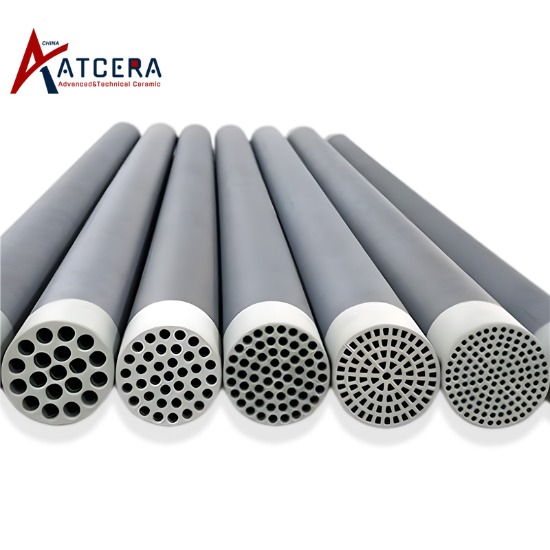
Modificación hidrofóbica de la superficie de la membrana cerámica.
La modificación hidrófoba de la superficie de la película cerámica generalmente se logra combinando o adhiriendo materiales hidrófobos, seleccionando una energía superficial más baja, una rugosidad y una estructura superficial apropiadas, como el uso de silano o tiol para proporcionar propiedades químicas a la superficie, y la introducción de micras o nanoestructuras para obtenga una superficie con mejor rugosidad, mejore el efecto hidrofóbico de la superficie de la película y mejore el rendimiento de separación.
Existen tres métodos comunes para la modificación hidrófoba de la superficie de la membrana cerámica: impregnación, sol-gel y deposición química de vapor.
01. Método de inmersión
Impregnation method (Impregnation method) does not require special equipment, just the original ceramic film directly immersed in hydrophobic substance solution, the method is simple and direct, easy to operate, low cost. The hydrophobic modification of ceramic membrane surface is carried out by immersion method, which usually uses the functional group of hydrophobic substance to connect with the hydroxyl group on the ceramic membrane surface through condensation reaction.
Taking siloxane as a modifier for example, the operation steps of the impregnation method are as follows: dissolve the organosilane in water or ethanol and hydrolyze it to obtain a reactive silanol solution; When the pre-treated ceramic membrane is immersed in the solution, the reactive silane molecules can be adsorbed on the surface of the membrane, and the hydrophobic membrane can be obtained.
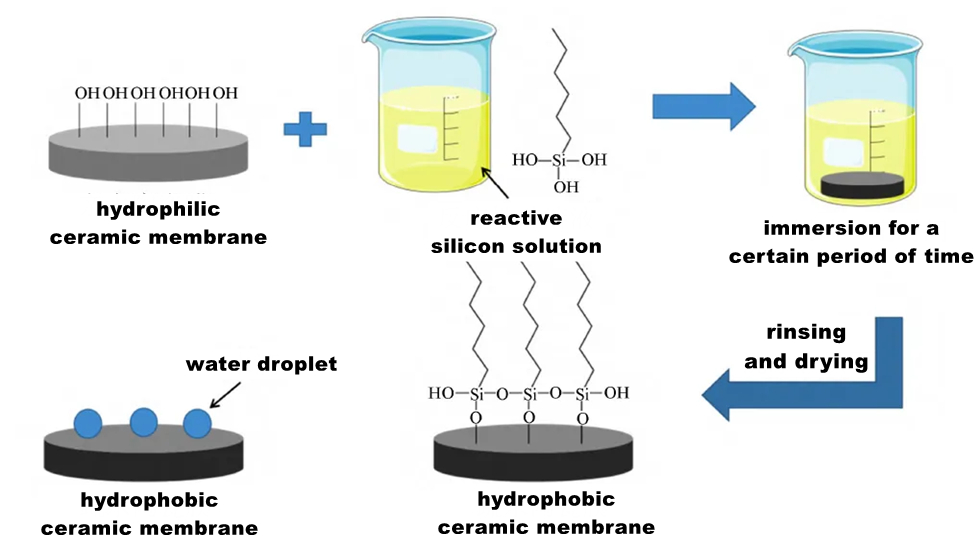
Hydrophobic effect is the result of the joint action of surface roughness and surface energy. In the study of hydrophobic modification of ceramic film, it is usually first to provide a certain rough micro-nano structure on the surface of ceramic film, and then modify it with low surface energy. In addition to the modification with silane coupling agent, mercaptan is also the preferred material to reduce the surface energy of the film.
In summary, the operation and steps of hydrophobic modification of the surface of ceramic film by impregnation method are relatively simple, and are greatly affected by the type of modifier, the concentration of modifier, the impregnation time, the number of impregnation times and the roughness of the surface of ceramic film. In addition, because the number of substances with low surface energy that react depends on its own concentration and the number of hydroxyl groups on the surface of ceramic film, Therefore, the method also has a great dependence on the reactive hydroxyl group on the surface of the ceramic membrane.
02. Sol-gel method
Sol-gel technique uses compounds containing highly chemically active components as precursors, and mixes these raw materials uniformly in the liquid phase. After chemical reactions such as hydrolysis and condensation, a stable transparent Sol system is formed in the solution. The sol is slowly polymerized among aged colloidal particles to form a gel with a three-dimensional network structure. The gel was dried and sintered to produce molecular and even nanostructured materials.
The hydrophobic modification of ceramic membrane by sol-gel method can form a large rough structure on the surface of the membrane, and can directly bind low surface energy chemicals. However, the early introduction of organosilane into the sol solution may lead to the formation of large volume polymers, resulting in poor modification effects.
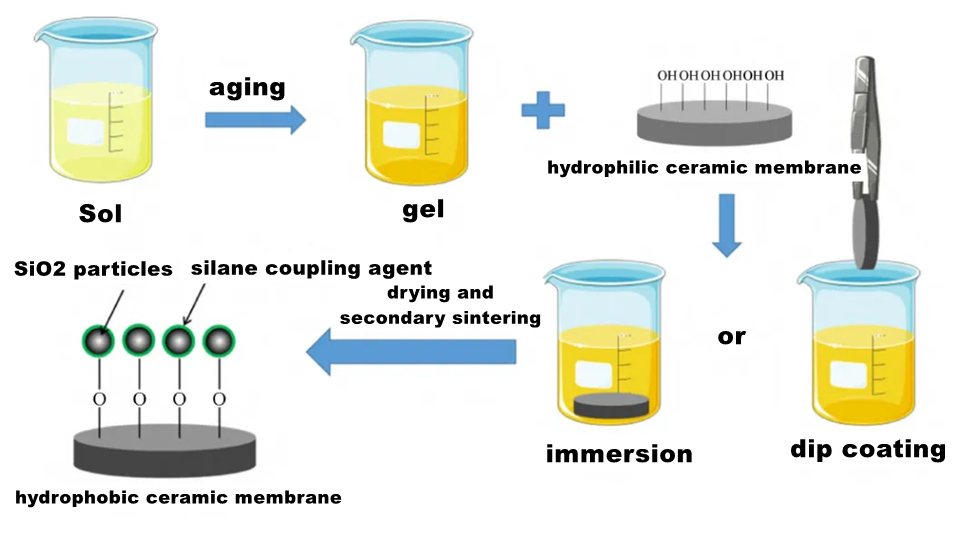
Compared with other methods, sol-gel method can prepare a stable hydrophobic surface with good separation effect, but it takes a long time to prepare the sol solution, and macromolecular polymers may be formed in the process, which affects the modification effect. In general, secondary sintering is required after the completion of coating, and the process is more complicated. In addition, excessive temperature during secondary sintering will destroy the structure of the film, reduce the hydrophobicity and stability of the film, and the aperture of the modified film will decrease with the increase of the number and time of sol-gel coating. In addition, the sol has an important effect on the formation of colloid in the process of colloid preparation, and then affects the film forming quality. Coating time and times, ambient temperature and humidity, heating rate, calcination temperature and calcination time all have a great influence on the subsequent coating drying process. At present, the process can be simplified by reducing the sintering steps at high temperature, forming a rough structure on the surface of the film at one time and combining with low surface energy materials, so as to reduce the damage of the film structure at high temperature.
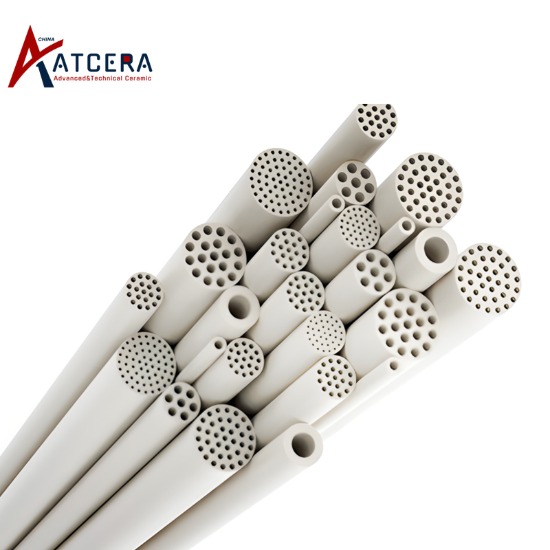
03 Chemical vapor deposition method
chemical vapor deposition (CVD) uses gas phase reactants deposited on the substrate surface to form a solid film with specific chemical properties. The method has the advantages of controllable film composition, good film repeatability, uniform film layer, wide application range, no restriction on the shape of the substrate and no damage to the substrate material, and is an effective method to change the surface properties and microstructure of the film. For hydrophobic modification of the ceramic film using this method, the ceramic film needs to be placed in a closed container and heated at the boiling point temperature of the organosilane for a long time. The organosilane vapor is passed through to react with the hydroxyl group on the surface of the ceramic film, and the reaction principle is the same as that of the impregnation method.
Under normal circumstances, in order to make the organosilane reagent can be fully utilized, it is necessary to select a closed container with a size similar to the ceramic membrane, so that the contact and reaction of organosilane vapor with the ceramic membrane can be maximized.
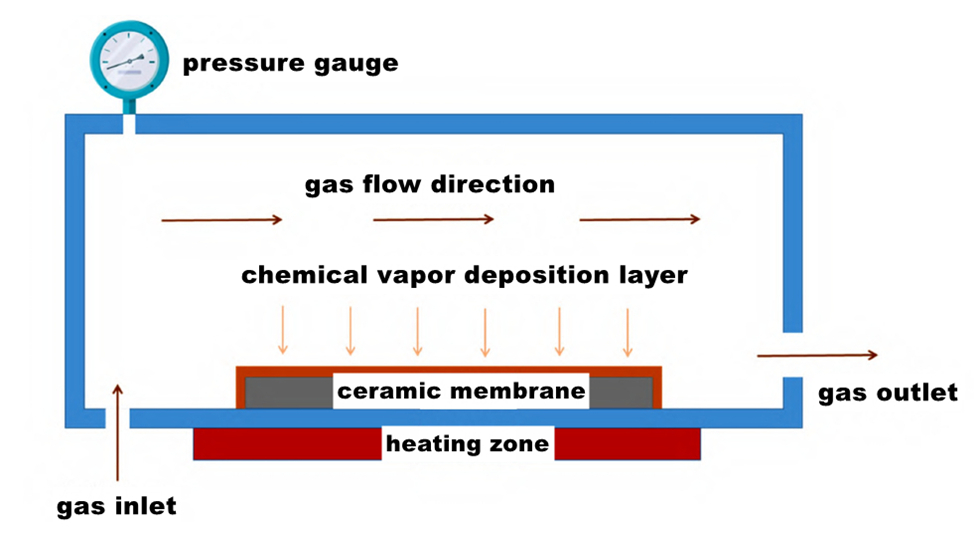
La deposición química de vapor (CVD) es el método preferido para preparar micronanopartículas y nanobarras en la superficie de la película y formar la microestructura ordenada. La película cerámica hidrofóbica modificada mediante deposición química de vapor tiene las ventajas de una capa de película uniforme, buena estabilidad y un amplio rango de aplicación, pero al mismo tiempo, el espesor de la película hidrofóbica es delgado, las propiedades mecánicas son insuficientes y defectos como grietas y Las burbujas son fáciles de producir bajo impacto externo. Las gotas de agua y los contaminantes penetran en la película a través de grietas, destruyen su estructura interna y reducen la propiedad hidrofóbica y la estabilidad de la película. Algunos de los organosilanos involucrados en la reacción de deposición son tóxicos y causarán daños al cuerpo humano y al medio ambiente. Además, la temperatura de reacción requerida por este método es alta, y el alto consumo de energía y el alto costo resultantes limitan su aplicación en la producción industrial real.





























